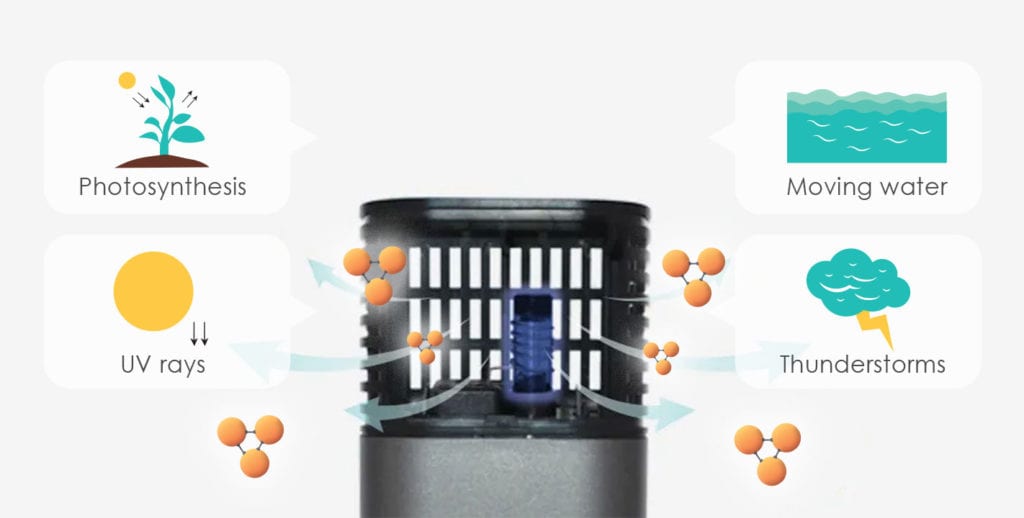PREV POST
Indoor Protection: What if there is no proper ventilation to reduce the risks?

Indoor Environmental Issues

It is not always possible to prevent the spread of viruses and bacteria in enclosed environments such as the home, business premises or public places but there are ways to reduce the risk.
Wearing masks will help in keeping the virus or bacteria from spreading into the environment but if an infected person is inside a building, inevitably some virus will escape into the air.
Once the virus escapes into the air inside a building, there are ways to reduce the risk. One way is to use a combination of bringing fresh air from the outside through proper ventilation coupled with Cerafusion™ Air & Surface Sterilization Technology.
The fundamental difference between the two methods is Ventilation dilutes viral load through air exchange whilst Cerafusion™ eliminates the virus completely through sterilizing the air and surfaces.

In commercial buildings, outside air is brought in through ventilation and air-conditioning (HVAC) systems. Smaller buildings and homes that do not have HVAC systems, outside air gets in through open windows and doors. Both the World Health Organization and U.S. Centers for Disease Control and Prevention say that poor ventilation increases the risk of transmitting viruses.
If you are in control of your indoor environment, make sure you are getting enough fresh air from outside circulating into the building. In many situations you are not in control, relying on centralised systems.
A study from a team of researchers from Pacific Northwest National Laboratory in US reported that in a multiroom building, rapid air exchanges in the ventilation system can in fact spread coronavirus particles rapidly from the source room into other rooms at high concentrations.

There are other studies that reported similar situations especially if the air flow distribution is not properly designed or the system is poorly maintained.
The pandemic has highlighted the potential weaknesses and risks of air flow distribution in an indoor environment. Contrary to reducing risk, improper ventilation and air flow can inadvertently contribute to the increased risk of airborne infection. For Example: When air circulating in an office happens to flow in the direction of an infected person, and then continues to flow towards other people around him or her, the chance of the others getting infected is very high. Eliminating the risk of airborne transmission completely will also be hindered by factors such as the complexity of the interior layout and furnishing.
The individual or split unit air conditioning system used in smaller offices (as an example) is constantly recycling the indoor air. Any infected person in the room will increase the risk of someone else getting infected because of the recycled air without being sterilized.
The Malaysia Chapter of the American Society of Heating, Refrigerating and Air-Conditioning Engineers (MASHRAE) with its technical resources have established an Epidemic Task Force to address the challenges of the current pandemic and probable future epidemics – How to achieve the WHO and Department of Occupational Safety & Health (DOSH) Ventilation guideline of 10L/s per person for enclosed indoor environments.
The objective of ventilation in buildings is to provide healthy (outdoor) air for breathing by diluting the pollutants in the building and removing pollutants from it. Achieving the ventilation rate of 10L/s per person is not always possible, especially in enclosed air-conditioned environments. Given the challenges, a combined metrics of Dilution (i.e., Ventilation), Filtration and Sterilization of indoor air that is equivalent to outdoor air intake was created to make it effective.
Dilution is achieved by introducing outdoor air to the occupied space to ‘reduce’ the concentration of the virus below the infectious dose. Filtration or Entrapment of the virus (through recirculating air) is achieved via filters installed in the air conditioning equipment, or with portable air purifiers. Sterilization technologies utilizing low ozone level within health and safety guidelines of 0.05ppm such as Cerafusion™ Technology serve to deactivate or disintegrate the virus in the air to render it harmless to the occupants. In combination – increased ventilation, improved filtration and air sterilization technologies, the 10L/s per person ventilation guideline can be achieved.
Given that sterilization with low ozone concentration of 0.05ppm is accepted as one of the strategies to achieve the ventilation rate of 10L/s per person, Cerafusion™ Sterilization Technology not only meets with the criteria but is also proven by several studies to be highly effective in deactivating pathogens such as bacteria and viruses. It will destroy the DNA and RNA of the pathogens, thus removing the hazard. It also addresses the physical challenges in achieving adequate and proper ventilation mentioned earlier.
If you cannot get enough fresh air into a room by having a proper ventilation system, then Medklinn Cerafusion™ Air & Surface Sterilization (low ozone concentration 0.05ppm ambient) is one of the recommended methods by MASHRAE to help fulfil the steps in achieving the prescribed ventilation rate of 10L/s per person, thus creating a safer and hygienic environment. A MASHRAE Ventilation Calculator has been created for users of a variety of premises to determine optimal equivalent ventilation solutions and strategies to improve ventilation and meet with WHO and DOSH guidelines. Interested parties can contact MASHRAE.
Medklinn Air+Surface Sterilizers with its patented Cerafusion™ Sterilization Technology sterilizes the air and surfaces continuously 24/7, a high level of hygiene can be attained thereby reducing the risk. Hygiene is a crucial factor in ensuring safety in indoor environments. What is impressive is the speed at which Cerafusion™ can eliminate viruses and its ability to sterilize all the air and all the surfaces in entirety within a given enclosed area.

Differences between Ventilated Air and Cerafusion™ Sterilized Air
– Ventilated Air does not have anti-microbial properties to disinfect the indoor environment.
– Cerafusion™ Sterilized Air has anti-microbial properties to disinfect the indoor environment.
A research study titled Efficacy of indoor air decontamination using Medklinn PRO AS2 Air & Surface Sterilizer (with Cerafusion™ Sterilization Technology) in terms of germ reduction in aerosols was commissioned by Medklinn Germany GmbH & Co KG and conducted by HygCen Germany GmbH, an independent research institute certified by the German Accreditation Body (DAkkS) with EN ISO/ IEC 17025 accreditation for disinfectants and medical devices.
The objective of the study was to evaluate the effectiveness of Medklinn Cerafusion™ Sterilization Technology in deactivating airborne germs (aerosols) in an enclosed 300sq ft x 9ft high room. The test was conducted over 120 minutes against bacteriophages as a surrogate for viral efficacy.
The result was a 99% reduction in airborne germs (aerosols) within the first 10 minutes of the test. Germs refer to microscopic bacteria, viruses, fungi, and protozoa that can cause disease. The HygCen Germany report also states a comparable efficacy against enveloped viruses, including coronaviruses and influenza viruses.
This result is consistent with other studies conducted over the last 12 months, including the study by Fujita Health University Japan, on the efficacy of low and safe levels of ozone (0.05ppm ambient level) in deactivating enveloped viruses, such as coronaviruses.
Medklinn Cerafusion™ Sterilization Technology and all its products meet with international public health and safety standards on the safe use of ozone (0.05ppm) and with CE marking conforming with European health, safety and environmental protection standards.
Medklinn Air+Surface Sterilizers works effectively as a standalone hygiene and safety measure or in combination with existing ventilation strategies or solutions as indicated by MASHRAE Epidemic Task Force to meet with DOSH ventilation guideline of 10L/s per person.
Press Releases & Media Coverage
8
Personal Solutions
71
Technology
14
News & Events
9
Collaborations
1
Ozone Water
1
Ozone Terminology
5
Indoor Environmental Issues
9
Hand Foot & Mouth Disease (HFMD)
2
Mould
3
Business Solutions
27
Cross Infections
17
Bad Smell
9
Sinus Allergies
3
Customer Success Stories
27